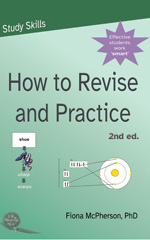On a number of occasions I have reported on studies showing that people with expertise in a specific area show larger gray matter volume in relevant areas of the brain. Thus London taxi drivers (who are required to master “The Knowledge” — all the ways and byways of London) have been found to have an increased volume of gray matter in the anterior hippocampus (involved in spatial navigation). Musicians have greater gray matter volume in Broca’s area.
Other research has found that gray matter increases in specific areas can develop surprisingly quickly. For example, when 19 adults learned to match made-up names against four similar shades of green and blue in five 20-minute sessions over three days, the areas of the brain involved in color vision and perception increased significantly.
This is unusually fast, mind you. Previous research has pointed to the need for training to extend over several weeks. The speed with which these changes were achieved may be because of the type of learning — that of new categories — or because of the training method used. In the first two sessions, participants heard each new word as they regarded the relevant color; had to give the name on seeing the color; had to respond appropriately when a color and name were presented together. In the next three sessions, they continued with the naming and matching tasks. In both cases, immediate feedback was always given.
But how quickly brain regions may re-organize themselves to optimize learning of a specific skill is not the point I want to make here. Some new research suggests our ideas of cortical plasticity need to be tweaked.
In my book on note-taking, I commented on how emphasis of some details (for example by highlighting) improves memory for those details but reduces memory of other details. In the same way, increase of one small region of the brain is at the expense of others. If we have to grow an area for each new skill, how do we keep up our old skills, whose areas might be shrinking to make up for it?
A rat study suggests the answer. While substantial expertise (such as our London cab-drivers and our professional musicians) is apparently underpinned by permanent regional increase, the mere learning of a new skill does not, it seems, require the increase to endure. When rats were trained on an auditory discrimination task, relevant sub-areas of the auditory cortex grew in response to the new discrimination. However, after 35 days the changes had disappeared — but the rats retained their new perceptual abilities.
What’s particularly interesting about this is what the finding tells us about the process of learning. It appears that the expansion of bits of the cortex is not the point of the process; rather it is a means of generating a large and varied set of neurons that are responsive to newly relevant stimuli, from which the most effective circuit can be selected.
It’s a culling process.
This is the same as what happens with children. When they’re young, neurons grow with dizzying profligacy. As they get older, these are pruned. Gone are the neurons that would allow them to speak French with a perfect accent (assuming French isn’t a language in their environment); gone are the neurons that would allow them to finely discriminate the faces of races other than those around them. They’ve had their chance. The environment has been tested; the needs have been winnowed; the paths have been chosen.
In other words, the answer’s not: “more” (neurons/connections); the answer is “best” (neurons/connections). What’s most relevant; what’s needed; what’s the most efficient use of resources.
This process of throwing out lots of trials and seeing what wins, echoes other findings related to successful learning. We learn a skill best by varying our practice in many small ways. We learn best from our failures, not our successes — after all, a success is a stopper. If you succeed without sufficient failure, how will you properly understand why you succeeded? How will you know there aren’t better ways of succeeding? How will you cope with changes in the situation and task?
Mathematics is an area in which this process is perhaps particularly evident. As a student or teacher, you have almost certainly come across a problem that you or the student couldn’t understand when expressed in one way, and maybe several different ways. Until, at some point, for no clear reason, understanding ‘clicks’. And it’s not necessarily that this last way of expressing / representing it is the ‘right’ one — if it had been presented first, it may not have had that effect. The effect is cumulative — the result of trying several different paths and picking something useful from each of them.
In a recent news item I reported on a finding that people who learned new sequences more quickly in later sessions were those whose brains had displayed more 'flexibility' in the earlier sessions — that is, different areas of the brain linked with different regions at different times. And most recently, I reported on a finding that training on a task that challenged working memory increased fluid intelligence in those who improved at the working memory task. But not everyone did. Those who improved were those who found the task challenging but not overwhelming.
Is it too much of a leap to surmise that this response goes hand in hand with flexible processing, with strategizing? Is this what the ‘sweet spot’ in learning really reflects — a level of challenge and enjoyability that stimulates many slightly different attempts? We say ‘Variety is the spice of life’. Perhaps we should add: ‘Variety is the key to learning’.
Kwok, V., Niu Z., Kay P., Zhou K., Mo L., Jin Z., et al. (2011). Learning new color names produces rapid increase in gray matter in the intact adult human cortex. Proceedings of the National Academy of Sciences.
